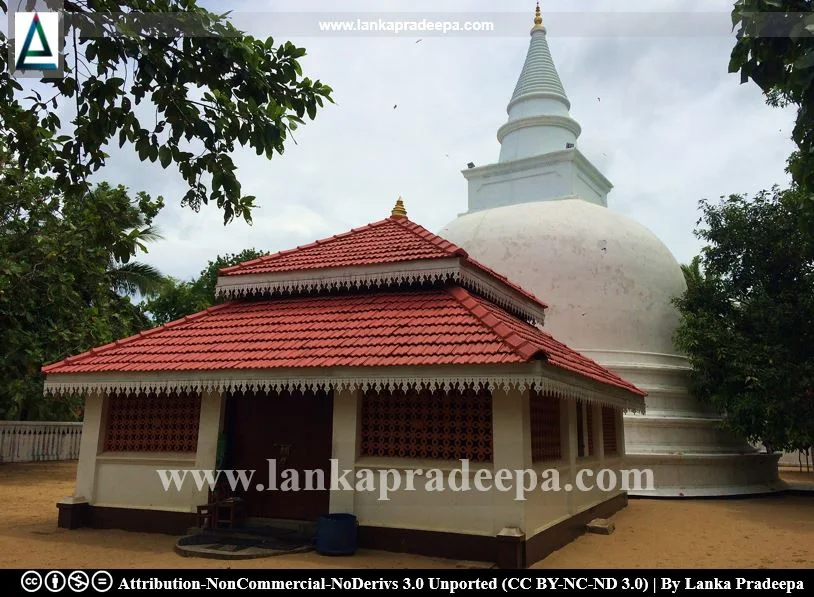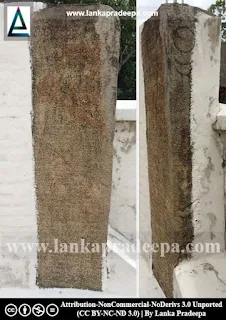
|
Kithsirimewan Kelaniya Viharaya |
Kithsirimewan Kelaniya Viharaya, also known as Egoda Kelaniya Viharaya (Sinhala: කිත්සිරිමෙවන් කැළණිය රජ මහා විහාරය, එගොඩ කැළණිය විහාරය), is a Buddhist temple situated in Kelaniya in Colombo District, Sri Lanka. It is built on the northern bank of the Kelani Ganga River near the Kelaniya Raja Maha Viharaya which is located on the southern bank of the river.
History
According to the chronicles, the Buddha in the eighth year after his enlightenment visited Kelaniya in Sri Lanka with his followers on the full moon day of Vesak and this visit was done upon the invitation by the Naga King Maniakkhika. It is said that the king built a Stupa here by enshrining the gem-studded throne on which the Buddha was seated while preaching Dhamma to the king and his followers. The Stupa in the present Kelaniya Raja Maha Viharaya is believed to be the monument that holds this sacred gem-studded throne.
During this visit, the Buddha and his followers bathed in the Kelani Ganga river before taking the meals offered by King Maniakkhika. On this occasion, the Buddha gave the Jalasatikawa (the bathing cloth) he was clad in, to the king. This cloth was enshrined in another Stupa built by the king at the place where the present Kithsirimewan Kelaniya Viharaya stands. This Stupa was later renovated and enlarged by King Kit Sri Meghavanna (also known as Kithsirimewan) in the 4th century A.D.
Inscriptions

Of the few inscriptions unearthed from the site, two are pillar inscriptions belonging to the 10th century A.D. (Ranawella, 2005). A slab inscription dated to the 14th century A.D. has also been found (Ranawella, 2014). These inscriptions are presently erected near the entrance gate of the Stupa terrace.
Kitsirimewan Kelaniya Vihara Slab Inscription
This inscription (left photograph) is found on a slab of about 6 ft. 4 in. tall and 1 ft. 10 in. wide (Ranawella, 2014). The slab has a slightly rounded upper part and the average thickness of it is about 7 in. (Ranawella, 2014). Fifty-one lines of writing are visible on the front face of the slab. Fifteen more lines along with the figures of a crow, a dog, the sun, and the moon are also found engraved on the right-hand side of it (Ranawella, 2014).
Prof. Sirimal Ranawella has given an account regarding this inscription as follows;
The inscription is dated A.B. 1887 (1344/5 A.D.), the same date as that of the Gadaladeniya and Lankatilaka rock inscriptions of King Bhuvanaikabahu IV (1341-1351), but no regnal year either of Bhuvanaikabahu IV or Parakramabahu V (1344-1359) is given therein. The inscription had been set up by an unnamed hierarch of the lineage of Gangatala Karambavalana, who was the head of the Vilgammula fraternity at that time; it informs us that this hierarch had attended to the repairs of Kitsirimevan Kalani-Viharaya with the patronage of a powerful minister named Alagakkonara, described as the tenth in succession from Nissanka Alagakkonara who himself belonged to a noble family of Vanci. S. Paranavitana who identifies this Alagakkonara as the minister of that name referred to in the Karagala Inscription of the eleventh regnal year of King Vijayabahu V (1335-1341), incline to assigned ......>>
Citation: Ranawella, 2014. p. 22.


Related Posts
Read Also
References
Books
1) Ranawella, S., 2005. Archaeological Survey of Ceylon: Inscriptions of
Ceylon: Vol. V, Part. III. Department of Archaeology. ISBN: 955-91-59-57-7.
pp.101-104.
2) Ranawella, S., 2014. Archaeological Survey of Ceylon: Inscriptions of
Ceylon: Vol. VII. Department of Archaeology. ISBN: 978-955-9159-62-9.
pp.22-26.

